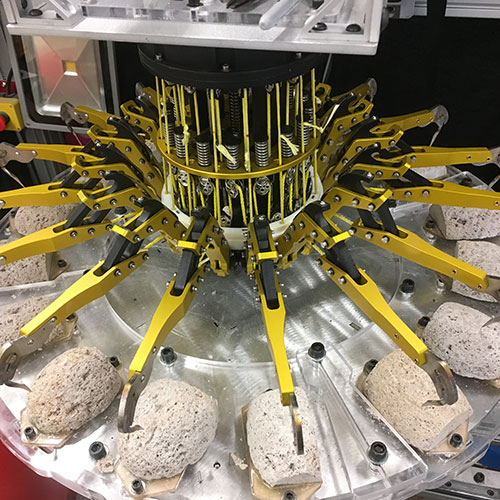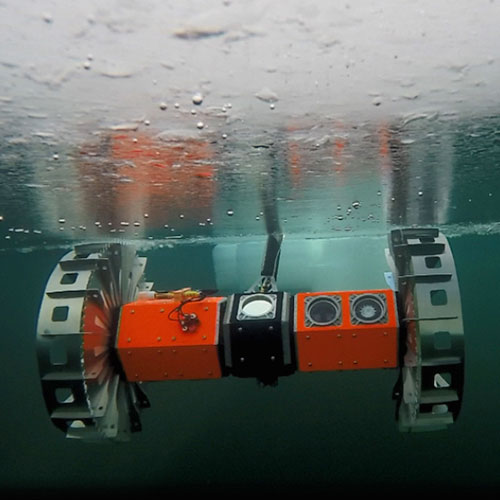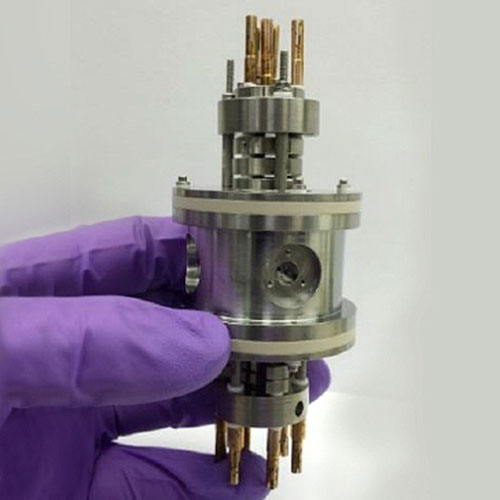Many of our scientific investigations will require close encounter and the sampling of extra-terrestrial material in potentially habitable worlds and in extreme environments where life could have originated or may exist today. These may include sampling deep ocean thermal vents under the icy crust of Europa, sampling the methane oceans of Titan or plumes of Enceladus, drilling deep under the surface of Mars, or sampling the hot surface of Venus and other exciting and challenging destinations.

Underwater Gripper
Hydrothermal vents on the ocean floor, rich with nutrients and energy, are potential locations where life might have emerged. This gripper, designed for a deep-water robotic vehicle, can sample the minerals and microbial communities found in these extreme environments.

Buoyant Under-Ice Rover
This ocean-going robot is buoyant, allowing it to drive on the underside of ice sheets. This interface between liquid and solid water is a key place to look for life on other worlds. On Earth, the rover has been deployed to locate methane seeps on the bottoms of frozen lakes in Alaska, and under sea ice several meters thick.

Quadrupole Ion Trap Mass Spectrometer
This is a new, multipurpose planetary exploration tool that provides exceptional accuracy and sensitivity for measuring noble gases and trace species in planetary atmospheres. It is also capable of conducting geochronology experiments, as well as studying planetary habitability and searching for signs of life.